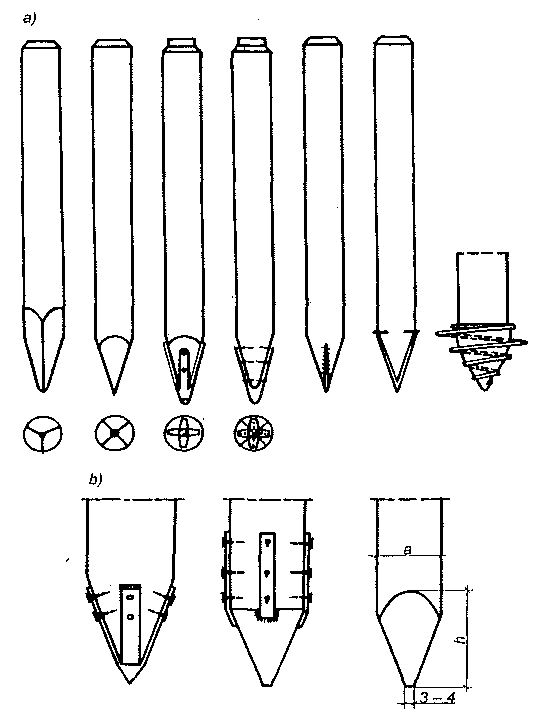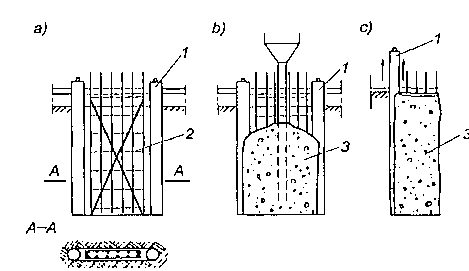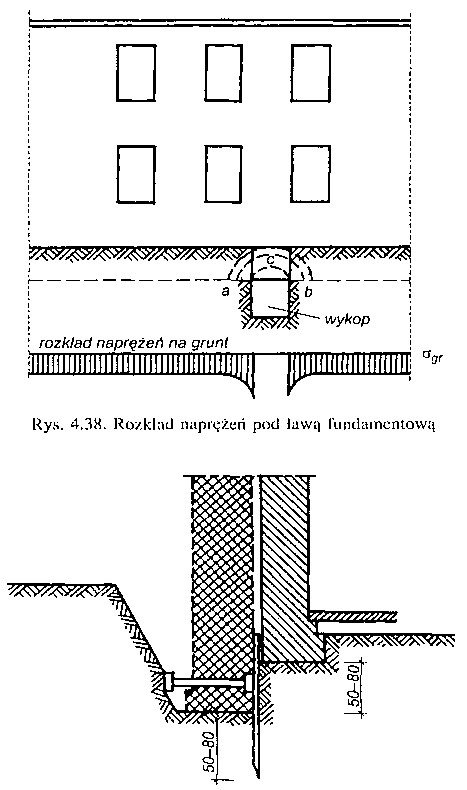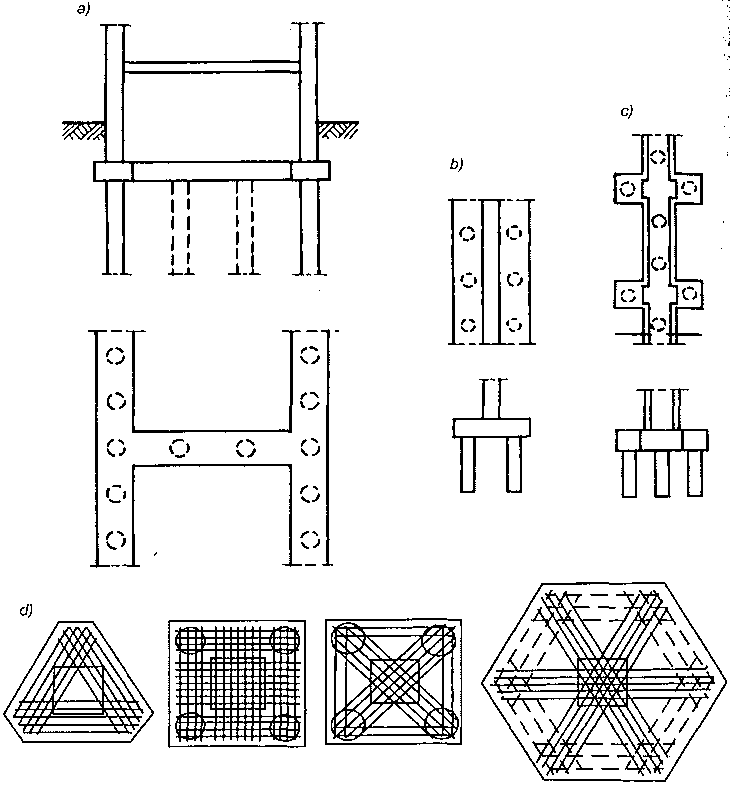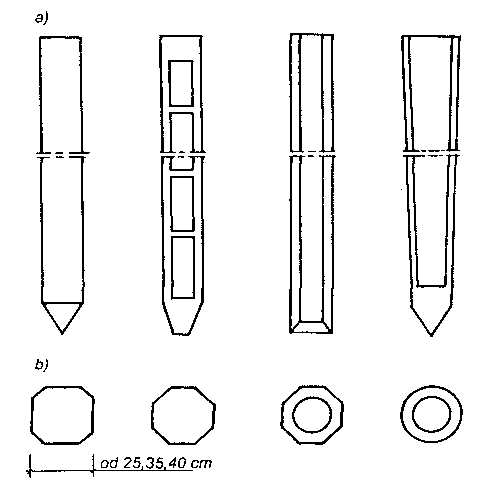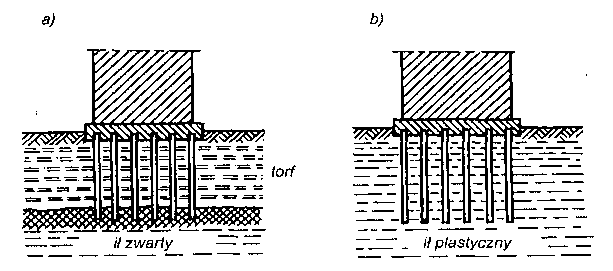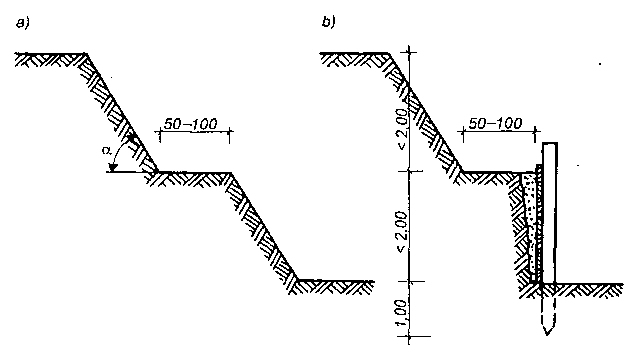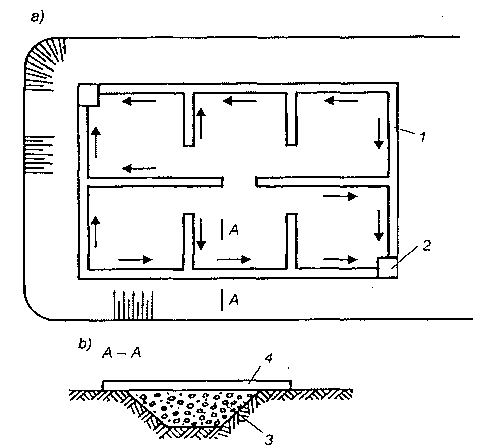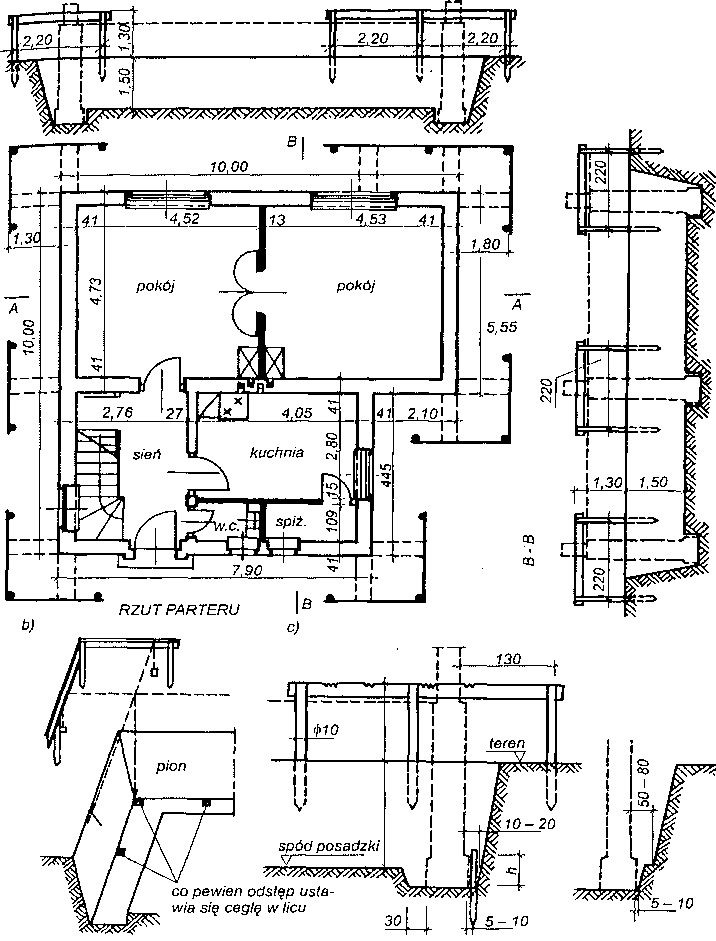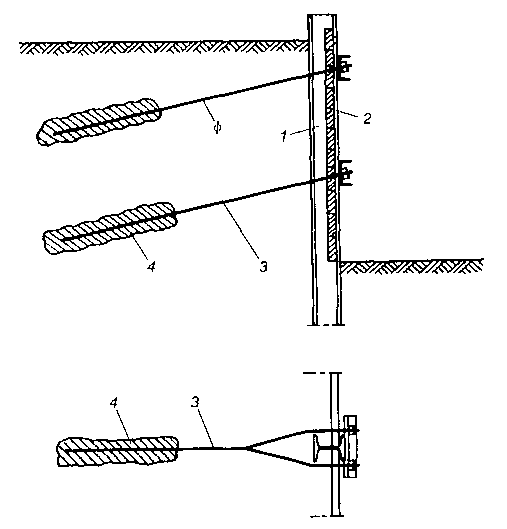 Kotwie wiercone (iniekcyjne); 1 — dwuteownik, 2 — bale, 3 — cięgno, 4 — buława.
Kotwie wiercone (iniekcyjne); 1 — dwuteownik, 2 — bale, 3 — cięgno, 4 — buława.
Na rysunku przedstawiono ścianę podpierającą z kotwiami gruntowymi. Kotwie gruntowe wprowadzane są do gruntu przez wiercenie lub wbijanie w miarę głębienia wykopu. Końcową część otworu wypełnia się pod ciśnieniem zaprawą cementową, która tworzy tzw. buławę. Cięgno wykonane jest z pręta zabezpieczonego przed korozją. Tego rodzaju kotwie mogą być stosowane zarówno do ścian tymczasowych, jak i stałych i o prawie dowolnej wysokości. Wykopy w sąsiedztwie istniejących budynków możemy w gruntach spoistych zabezpieczyć również ścianami z pali żelbetowych.
Aby uniknąć wpływu szkodliwych drgań na istniejące budynki, pale te w gruntach spoistych wykonuje się najczęściej jako wiercone typu Wolfsholza. Drgania wywołane wbijaniem pali mogą spowodować spękania i zarysowania budynków. Ściana wykonana z pali przenosi zarówno obciążenia budynku, jak również i parcie gruntu.
Przy wykonywaniu zabezpieczeń wykopów w sąsiedztwie istniejących budynków należy szczególną uwagę zwrócić na to, aby zabezpieczenia te nie doznały odkształceń, które powodowałyby usuwanie się gruntu spod istniejących budynków, gdyż mogłoby to spowodować ich uszkodzenie. W przypadku wykopów powyżej 3,0 m pale należy dodatkowo podeprzeć zastrzałami, a roboty wykonywać etapami.
W przypadku gruntów zawodnionych, gdy poziom wody gruntowej znajduje się wysoko i może zalewać wykop w czasie prowadzenia w nim robót, wówczas wykonuje się wykopy po wbiciu ścianki szczelnej, tzw. palisady, a roboty w wykopie prowadzi się przy obniżonym poziomie wody, który uzyskuje się przez stałe pompowanie.
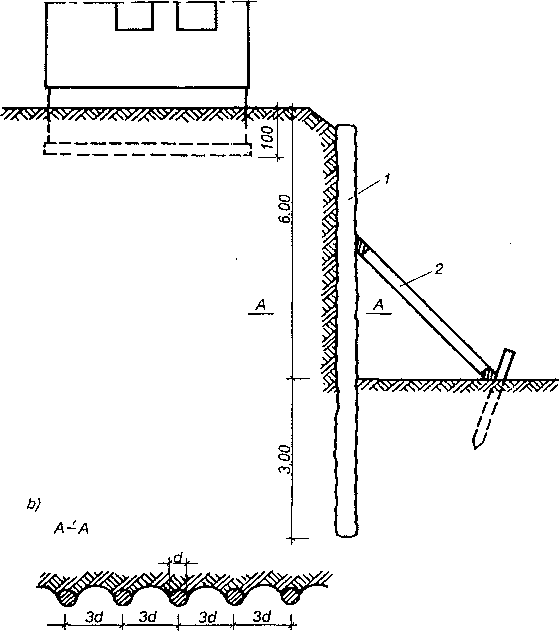 Ściana z pali żelbetowych zabezpieczająca wykop i istniejący budynek: a) przekrój pionowy, b) przekrój poziomy; 1 — pal żelbetowy, 2 — zastrzał.
Ściana z pali żelbetowych zabezpieczająca wykop i istniejący budynek: a) przekrój pionowy, b) przekrój poziomy; 1 — pal żelbetowy, 2 — zastrzał.

